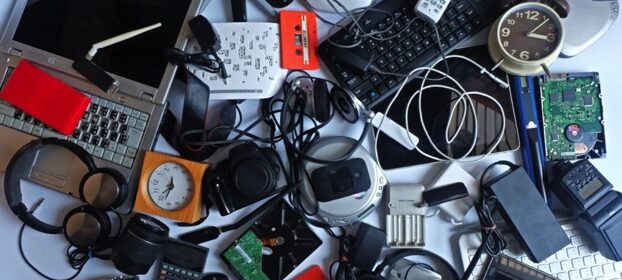Dealing with E-Waste: What and What Not to Do

LAUREN HA – Have you ever thrown out an old phone, discarded an outdated computer, or dumped a pair of headphones in favor of a newer product? With new technology being developed at an increasingly rapid pace,what seems new today turns old tomorrow. And the products of yesterday, collectively termed “e-waste”, are becoming a global problem for our landfills.
The United Nations estimated that in 2020, on average, each person discarded about 16 pounds of e-waste; 16 pounds of old cell phones, tablets, toasters, ovens and other appliances that collect in massive digital dumps. This accumulation of e-waste presents a massive health hazard to millions of children, adolescents, and expectant mothers who work in the informal waste sector or live near e-waste recycling centers. The toxic chemicals produced from these landfills, namely mercury and lead, have the potential to adversely affect the development of unborn babies and children. Dr Tedros Adhanom Ghebreyesus, Director-General of the World Health Organization, states, “We need to rally to protect our most valuable resource – the health of our children – from the growing threat of e-waste.”
While there are policies in place regarding the management of e-waste, certain countries address this environmental issue better than others. The European Union (EU) has devised the WEEE Directive, a set of guidelines on how to better manage e-waste and build a more sustainable future for future generations. In contrast, the U.S lags behind in e-waste policy. The U.S currently has no federal guidelines on the disposal of e-waste, with only 25 U.S states implementing electronic recycling laws.
Numerous developers and electronic sellers help consumers to properly recycle their electronics. For example, Apple Inc. allows customers to trade in old devices and earn credit towards new products. Best Buy offers haul-away and recycling services for major appliances such as fitness equipment, dishwashers, TVs and other appliances for a small fee. While these services aptly address the issue of e-waste, they are not widely used by the general populace and only accessible to a select few. Perhaps the greatest weapon to combat this threat is to appeal to the general consumer – ask to responsibly recycle, to buy second-hand, and to write to legislators.
Copy Editor: Vetri Maduraiveeran
Photography Source: https://www.greenbiz.com/article/systems-managing-e-waste-arent-keeping-consumer-electronics-market
